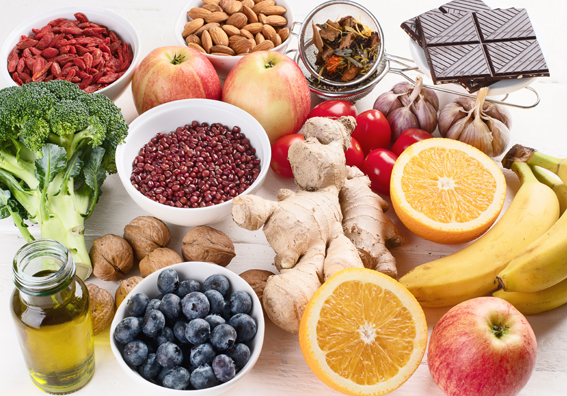Polyphenols
It is precisely the presence of hydroxyl (OH) groups that confers antioxidants their properties. Depending on the case, antioxidants can either donate a
hydrogen atom or give an electron to oxygen, thereby saturating and neutralizing it.
Some antioxidants also possess chelating properties, which means they can bind to toxic substances such as lead, iron, cadmium, and other heavy metals, facilitating their elimination through the kidneys or the digestive system.
Not only do polyphenols possess antioxidant properties, but many of them have also been shown to have anti-inflammatory, antibacterial, and antiplatelet effects. Additionally, they can enhance the action of the immune system and
facilitate the activity of certain essential enzymes for proper metabolism.
Los flavonoides se subdividen, a su vez, en flavonas, isoflavonas, antocianinas, flavanoles y flavanonas, todas las cuales tienen propiedades de potencia más o menos similar. Al igual que los flavonoides, presentan las mismas propiedades descritas anteriormente. Existe abundante literatura científica que avala suficientemente las propiedades saludables de los polifenoles debido a sus acciones
a nivel celular y metabólico.

